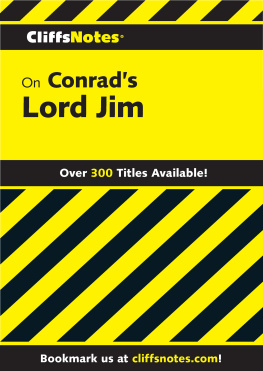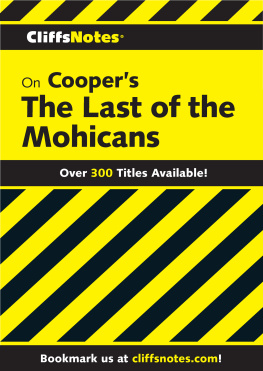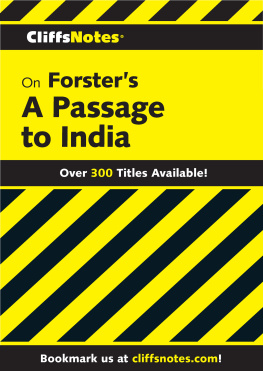Dougald B MacEachen - Cliffsnotes on Keats & Shelley
Here you can read online Dougald B MacEachen - Cliffsnotes on Keats & Shelley full text of the book (entire story) in english for free. Download pdf and epub, get meaning, cover and reviews about this ebook. year: 1999, publisher: HMH Books, genre: Non-fiction. Description of the work, (preface) as well as reviews are available. Best literature library LitArk.com created for fans of good reading and offers a wide selection of genres:
Romance novel
Science fiction
Adventure
Detective
Science
History
Home and family
Prose
Art
Politics
Computer
Non-fiction
Religion
Business
Children
Humor
Choose a favorite category and find really read worthwhile books. Enjoy immersion in the world of imagination, feel the emotions of the characters or learn something new for yourself, make an fascinating discovery.
- Book:Cliffsnotes on Keats & Shelley
- Author:
- Publisher:HMH Books
- Genre:
- Year:1999
- Rating:5 / 5
- Favourites:Add to favourites
- Your mark:
- 100
- 1
- 2
- 3
- 4
- 5
Cliffsnotes on Keats & Shelley: summary, description and annotation
We offer to read an annotation, description, summary or preface (depends on what the author of the book "Cliffsnotes on Keats & Shelley" wrote himself). If you haven't found the necessary information about the book — write in the comments, we will try to find it.
This CliffsNotes guide includes everything youve come to expect from the trusted experts at CliffsNotes, including analysis of the most widely read literary works.
Cliffsnotes on Keats & Shelley — read online for free the complete book (whole text) full work
Below is the text of the book, divided by pages. System saving the place of the last page read, allows you to conveniently read the book "Cliffsnotes on Keats & Shelley" online for free, without having to search again every time where you left off. Put a bookmark, and you can go to the page where you finished reading at any time.
Font size:
Interval:
Bookmark:
Copyright 1999 Houghton Mifflin Harcourt Publishing Company
All rights reserved.
www.hmhco.com
cliffsnotes.com
For information about permission to reproduce selections from this book, write to or to Permissions, Houghton Mifflin Harcourt Publishing Company, 3 Park Avenue, 19th Floor, New York, New York 10016.
The publisher and the author make no representations or warranties with respect to the accuracy or completeness of the contents of this work and specifically disclaim all warranties, including without limitation warranties of fitness for a particular purpose. No warranty may be created or extended by sales or promotional materials. The advice and strategies contained herein may not be suitable for every situation. This work is sold with the understanding that the publisher is not engaged in rendering legal, accounting, or other professional services. If professional assistance is required, the services of a competent professional person should be sought. Neither the publisher nor the author shall be liable for damages arising herefrom. The fact that an organization or website is referred to in this work as a citation and/or a potential source of further information does not mean that the author or the publisher endorses the information the organization or website may provide or recommendations it may make. Further, readers should be aware that Internet websites listed in this work may have changed or disappeared between when this work was written and when it is read.
Trademarks: CliffsNotes, the CliffsNotes logo, Cliffs, cliffsnotes.com, and all related trademarks, logos, and trade dress are trademarks or registered trademarks of Houghton Mifflin Harcourt Publishing Company. All other trademarks are the property of their respective owners. Houghton Mifflin Harcourt is not associated with any product or vendor mentioned in this book.
eISBN 978-0-544-18242-4
v1.0317
The romantic period is a term applied to the literature of approximately the first third of the nineteenth century. During this time, literature began to move in channels that were not entirely new but were in strong contrast to the standard literary practice of the eighteenth century.
How the word romantic came to be applied to this period is something of a puzzle. Originally the word was applied to the Latin or Roman dialects used in the Roman provinces, especially France, and to the stories written in these dialects. Romantic is a derivative of romant, which was borrowed from the French romaunt in the sixteenth century. At first it meant only like the old romances but gradually it began to carry a certain taint. Romantic, according to L. P. Smith in his Words and Idioms, connoted false and fictitious beings and feelings, without real existence in fact or in human nature; it also suggested old castles, mountains and forests, pastoral plains, waste and solitary places and a love for wild nature, for mountains and moors.
The word passed from England to France and Germany late in the seventeenth century and became a critical term for certain poets who scorned and rejected the models of the past; they prided themselves on their freedom from eighteenth-century poetic codes. In Germany, especially, the word was used in strong opposition to the term classical.
The grouping together of the so-called Lake poets (Wordsworth, Coleridge, and Southey) with Scott, Byron, Keats, and Shelley as the romantic poets is late Victorian, apparently as late as the middle 1880s. And it should be noted that these poets did not recognize themselves as romantic, although they were familiar with the word and recognized that their practice differed from that of the eighteenth century.
According to Ren Wellek in his essay The Concept of Romanticism (Comparative Literature, Volume I), the widespread application of the word romantic to these writers was probably owing to Alois Brandls Coleridge und die romantische Schule in England (Coleridge and the Romantic School in England, translated into English in 1887) and to Walter Paters essay Romanticism in his Appreciations in 1889.
The reaction to the standard literary practice and critical norms of the eighteenth century occurred in many areas and in varying degrees. Reason no longer held the high place it had held in the eighteenth century; its place was taken by imagination, emotion, and individual sensibility. The eccentric and the singular took the place of the accepted conventions of the age. A concentration on the individual and the minute replaced the eighteenth-century insistence on the universal and the general. Individualism replaced objective subject matter; probably at no other time has the writer used himself as the subject of his literary works to such an extent as during the romantic period. Writers tended to regard themselves as the most interesting subject for literary creation; interest in urban life was replaced by an interest in nature, particularly in untamed nature and in solitude. Classical literature quickly lost the esteem which poets like Pope had given it. The romantic writers turned back to their own native traditions. The Medieval and Renaissance periods were ransacked for new subject matter and for literary genres that had fallen into disuse. The standard eighteenth-century heroic couplet was replaced by a variety of forms such as the ballad, the metrical romance, the sonnet, ottava rima, blank verse, and the Spenserian stanza, all of which were forms that had been neglected since Renaissance times. The romantic writers responded strongly to the impact of new forces, particularly the French Revolution and its promise of liberty, equality, and fraternity. The humanitarianism that had been developing during the eighteenth century was taken up enthusiastically by the romantic writers. Wordsworth, the great champion of the spiritual and moral values of physical nature, tried to show the natural dignity, goodness, and the worth of the common man.
The combination of new interests, new attitudes, and fresh forms produced a body of literature that was strikingly different from the literature of the eighteenth century, but that is not to say that the eighteenth century had no influence on the romantic movement. Practically all of the seeds of the new literary crop had been sown in the preceding century.
The romantic period includes the work of two generations of writers. The first generation was born during the thirty and twenty years preceding 1800; the second generation was born in the last decade of the 1800s. The chief writers of the first generation were Wordsworth, Coleridge, Scott, Southey, Blake, Lamb, and Hazlitt. The essayist Thomas De Quincey, born in 1785, falls between the two generations.
Keats and Shelley belong to the second generation, along with Byron, who was older than they were by a few years. All three were influenced by the work of the writers of the first generation and, ironically, the careers of all three were cut short by death so that the writers of the first generation were still on the literary scene after the writers of the second generation had disappeared. The major writers of the second romantic generation were primarily poets; they produced little prose, outside of their letters. Another striking difference between the two generations is that the writers of the first generation, with the exception of Blake, all gained literary reputations during their lifetime. Of the writers of the second generation, only Byron enjoyed fame while he was alive, more fame than any of the other romantic writers, with perhaps the exception of Scott, but Keats and Shelley had relatively few readers while they were alive. It was not until the Victorian era that Keats and Shelley became recognized as major romantic poets.
Next pageFont size:
Interval:
Bookmark:
Similar books «Cliffsnotes on Keats & Shelley»
Look at similar books to Cliffsnotes on Keats & Shelley. We have selected literature similar in name and meaning in the hope of providing readers with more options to find new, interesting, not yet read works.
Discussion, reviews of the book Cliffsnotes on Keats & Shelley and just readers' own opinions. Leave your comments, write what you think about the work, its meaning or the main characters. Specify what exactly you liked and what you didn't like, and why you think so.













